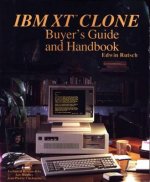eXTended8088
Experienced Member
Hi all,
I am trying to remember a old book i read many years ago about building your own clone. I do believe it was published in the late 80's I cold of sworn it was something like build your own 286 or 386 clone. I know I know.. generic. What vividly remember was the cover. the cover had a clone pc on a desk, the monitor shows some sort of graphical chart. the desk was made out of wood, I remember was a bookshelf with books titled on it, a lamp on the desk, green i think, and a fake tree or plant near it. Can anybody help me? i got this at the library about 17 years ago and can not find it since.:mrgreen: lol...
thanks!
I am trying to remember a old book i read many years ago about building your own clone. I do believe it was published in the late 80's I cold of sworn it was something like build your own 286 or 386 clone. I know I know.. generic. What vividly remember was the cover. the cover had a clone pc on a desk, the monitor shows some sort of graphical chart. the desk was made out of wood, I remember was a bookshelf with books titled on it, a lamp on the desk, green i think, and a fake tree or plant near it. Can anybody help me? i got this at the library about 17 years ago and can not find it since.:mrgreen: lol...
thanks!




